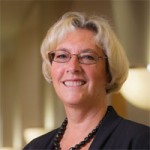This article is more than 5 years old.
In December, Thomas and I attended the fall meeting of CNI (Coalition for Networked Information) in Washington, DC. The organization meets twice a year, in spring and fall, and is heavily attended by Library Deans and CIOs of research institutions across the nation. I go to stay up to date on innovations in digital information technology. The December meeting is often plagued by bad weather and that was again the case this year. My flight was delayed so I missed the opening keynote and the first set of concurrent sessions. Here is the video of the keynote and here are the presentation materials from the breakout sessions. I will highlight the sessions that I thought notable.
I tried to attend all the sessions I could on digital humanities, since we are trying to increase our level of support for these kinds of projects at ZSR. A team from Columbia talked about two projects: jazz and music information retrieval and a digital resource on women in silent film. Both operate out of the Center for Digital Research and Scholarship, housed in the library with a staff of 15 (FIFTEEN)! The film project was really interesting as the web developer told how he had to “kill his darlings” more than once in the course of the work. In the discussion, someone observed that the purpose of digital scholarship centers is to promote partnerships between content experts, technology experts, and library experts. That is what we are trying to do at ZSR as well, with much more modest resources.
Joan Lippincott, Associate Executive DIrector at CNI, presented a study of trends in digital scholarship centers. A dozen or so exist in the US, mostly in large research libraries such as UVA, UCLA, Brown, Nebraska, Oregon, North Carolina State, Miami, Kansas, Richmond and a few in Canada. They tend to be run out of libraries, unlike digital humanities centers run by faculty, and are open to everyone in the university. They try to bring together technologies and expertise from across campus, both at the undergraduate and graduate levels. Common services are workshops, courses and one-on-one consultation. Harriet Hammasi from Brown and Vivian Lewis from McMaster gave presentations on their own digital scholarship centers.
I went to a session on the Digital Public Library of America, which has had a very successful launch and I believe will be a strong contributor to cultural memory in the future. Dan Cohen, the Executive Director, described DPLA as a social project, as much as a technology project. It is three things at once: a portal for discovery of all kinds of cultural heritage items, a platform to build on, and a strong public option. It launched with 2.4 million items and stands at 5.4 million only seven months later. A system of content hubs and regional service hubs distributes traffic across the system. (See Chelcie’s previous post on how ZSR can contribute content to DPLA)
Cliff Lynch, Executive Director of CNI, gave a summary of the E-book Roundtable that preceded the conference proper. You might think that e-books are old news in the library world, but there is still high interest in maximizing e-book content and little agreement on how to do so. E-journals are now routine, but the e-book industry is less well settled. Patrons don’t understand why it is not as easy as loading academic content on their Kindles, as they do for leisure reading. The Roundtable concluded that it will still take a little while to shake out all the issues involved with e-book acquisition, cataloging and incorporation into the curriculum.
I had to leave before the closing plenary to catch my flight. I came in during an ice storm and left during a snow storm. The government shut down, but luckily my flight did not! The next CNI meeting is in St. Louis in April. I can’t wait!

1 Comment on ‘Fall meeting of Coalition for Networked Information’
It’s interesting to see the distinction between digital scholarship centers and digital humanities centers as they’ve taken root at different campuses. Thanks for sharing!